United States National Library of Medicine
| United States National Library of Medicine | |
|---|---|
 | |
 Library in 1999 | |
 | |
| 38°59′45″N 77°05′56″W / 38.995951°N 77.098832°W | |
| Location | Bethesda, Maryland, United States |
| Type | Medical library |
| Established | 1836[1] (as the Library of the Office of the Surgeon General of the Army)[2] |
| Reference to legal mandate | Public Law 941 – August 3, 1956, an amendment to Title III of the Public Health Service Act |
| Branch of | National Institutes of Health |
| Collection | |
| Items collected | books, journals, manuscripts, images, and multimedia; genomic, chemical, toxicological, and environmental data; drug information; clinical trials data; health data standards; software; and consumer health information |
| Size | 27.8 million (2015) |
| Criteria for collection | Acquiring, organizing, and preserving the world's scholarly biomedical literature |
| Access and use | |
| Access requirements | Open to the public |
| Circulation | 309,817 (2015) |
| Other information | |
| Budget | US$341,119,000[3] |
| Director | Patricia Flatley Brennan, RN PhD[4] |
| Employees | 1,741 |
| Website | nlm.nih.gov |
The United States National Library of Medicine (NLM), operated by the United States federal government, is the world's largest medical library.[5]
Located in Bethesda, Maryland, the NLM is an institute within the National Institutes of Health. Its collections include more than seven million books, journals, technical reports, manuscripts, microfilms, photographs, and images on medicine and related sciences, including some of the world's oldest and rarest works.
The current acting director of the NLM is Stephen Sherry.[4]
History
[edit]The precursor of the National Library of Medicine, established in 1836, was the Library of the Surgeon General's Office, a part of the office of the Surgeon General of the United States Army. The Armed Forces Institute of Pathology and its Medical Museum were founded in 1862 as the Army Medical Museum. Throughout their history the Library of the Surgeon General's Office and the Army Medical Museum often shared quarters. From 1866 to 1887, they were housed in Ford's Theatre after production there was stopped, following the assassination of President Abraham Lincoln.[citation needed]
In 1956, the library collection was transferred from the control of the U.S. Department of Defense to the Public Health Service of the Department of Health, Education, and Welfare and renamed the National Library of Medicine, through the instrumentality of Frank Bradway Rogers, who was the director from 1956 to 1963. The library moved to its current quarters in Bethesda, Maryland, on the campus of the National Institutes of Health, in 1962.[citation needed]
Directors
[edit]Directors from 1945 to present[6]
| Portrait | Director | Took office | Left office |
|---|---|---|---|
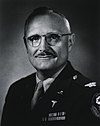
|
Leon Lloyd Gardner | 1945 | 1946 |

|
Joseph Hamilton McNinch | 1946 | 1949 |
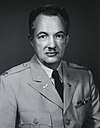
|
Frank Bradway Rogers | 1949 | 1963 |
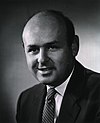
|
Martin Marc Cummings | 1964 | 1984 |
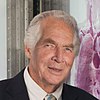
|
Donald A. B. Lindberg | 1984 | 2015 |
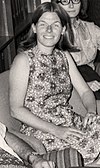
|
Betsy Humphreys (acting) | 2015 | 2016 |

|
Patricia Flatley Brennan | 2016 | 2023 |
Publications and informational resources
[edit]Since 1879, the National Library of Medicine has published the Index Medicus, a monthly guide to articles, in nearly five thousand selected journals. The last issue of Index Medicus was printed in December 2004, but this information is offered in the freely accessible PubMed, among the more than fifteen million MEDLINE journal article references and abstracts going back to the 1960s and 1.5 million references going back to the 1950s.[7]
The National Library of Medicine runs the National Center for Biotechnology Information, which houses biological databases (PubMed among them) that are freely accessible on the Internet through the Entrez search engine[8] and Lister Hill National Center For Biomedical Communications.[9] As the United States National Release Center for SNOMED CT, NLM provides SNOMED CT data and resources to licensees of the NLM UMLS Metathesaurus.[10] NLM maintains ClinicalTrials.gov registry for human interventional and observational studies. Additionally NLM runs ChemIDplus, which is a chemical database of over 400,000 chemicals complete with names, synonyms, and structures. It includes links to NLM and other databases and resources, including links to federal, state and international agencies.[11]
Toxicology and environmental health
[edit]The Toxicology and Environmental Health Program was established at the National Library of Medicine in 1967 and is charged with developing computer databases compiled from the medical literature and from the files of governmental and nongovernmental organizations.[12] The program has implemented several information systems for chemical emergency response and public education, such as the Toxicology Data Network, TOXMAP, Tox Town, Wireless Information System for Emergency Responders, Toxmystery, and the Household Products Database. These resources are accessible without charge on the internet.[citation needed]
Radiation exposure
[edit]The United States National Library of Medicine Radiation Emergency Management System[13] provides:
- Guidance for health care providers, primarily physicians, about clinical diagnosis and treatment of radiation injury during radiological and nuclear emergencies
- Just-in-time, evidence-based, usable information with sufficient background and context to make complex issues understandable to those without formal radiation medicine expertise
- Web-based information that may be downloaded in advance, so that it would be available during an emergency if the Internet were not accessible
Radiation Emergency Management System is produced by the United States Department of Health and Human Services, Office of the Assistant Secretary for Preparedness and Response, Office of Planning and Emergency Operations, in cooperation with the National Library of Medicine, Division of Specialized Information Services, with subject matter experts from the National Cancer Institute, the Centers for Disease Control and Prevention, and many U.S. and international consultants.[13]
Extramural division
[edit]The Extramural Division provides grants to support research in medical information science and to support planning and development of computer and communications systems in medical institutions. Research, publications, and exhibitions on the history of medicine and the life sciences also are supported by the History of Medicine Division. In April 2008 the current exhibition Against the Odds: Making a Difference in Global Health was launched.[citation needed]
National Center for Biotechnology Information division
[edit]National Center for Biotechnology Information is an intramural division within National Library of Medicine that creates public databases in molecular biology, conducts research in computational biology, develops software tools for analyzing molecular and genomic data, and disseminates biomedical information, all for the better understanding of processes affecting human health and disease.[citation needed]
See also
[edit]References
[edit]- ^ "A Brief History of NLM". National Library of Medicine. Retrieved September 29, 2016.
- ^ "Our Milestones. Archived 2013-02-16 at the Wayback Machine National Library of Medicine. Retrieved September 29, 2016.
- ^ "H.R. 3020 – Departments of Labor, Health and Human Services, and Education, and Related Agencies Appropriations Act, 2016". 114th Congress. 2015.
- ^ a b "Passing the NLM Torch: Welcome to Dr. Steve Sherry!". NLM Musings from the Mezzanine. October 4, 2023.
- ^ DeBakey ME (1991). "The National Library of Medicine. Evolution of a premier information center". JAMA. 266 (9): 1252–58. doi:10.1001/jama.266.9.1252. PMID 1870251.
- ^ "National Library of Medicine (NLM) - NLM Directors". The NIH Almanac. National Institutes of Health. November 3, 2023. Archived from the original on Sep 22, 2023.
- ^ "PubMed". United States National Library of Medicine. Retrieved May 28, 2013.
- ^ "NCBI Educational Resources". United States National Library of Medicine. Retrieved May 28, 2013.
- ^ "LHNCBC". Retrieved 1 August 2018.
- ^ "SNOMED CT". Retrieved 19 July 2018.
- ^ "ChemIDplus Lite – Chemical information with searchable synonyms, structures, and formulas".
- ^ "Toxicology and Environmental Health Program". National Library of Medicine. Retrieved July 11, 2007.
- ^ a b "Radiation Emergency Management System". National Library of Medicine.
Further reading
[edit]- Miles, Wyndham D. (1992). A History of the National Library of Medicine: The Nation's Treasury of Medical Knowledge. U.S. Government Printing Office. p. 531. ISBN 978-0-16-002644-7. NLM 8218545.
- Reznick, Jeffrey; Koyle, Ken (2017). US National Library of Medicine (PDF). Charleston, South Carolina: Arcadia Publishing. ISBN 978-1-4671-2608-3. LCCN 2017931439. NLM 101706419.
- Schullian, Dorothy; Rogers, Frank (January 1958). "The National Library of Medicine. I". The Library Quarterly: Information, Community, Policy. 28 (1): 1–17. doi:10.1086/618482. JSTOR 4304714. PMID 19938388. S2CID 37983204. NLM 0135203.
- Schullian, Dorothy; Rogers, Frank (April 1958). "The National Library of Medicine. II". The Library Quarterly: Information, Community, Policy. 28 (2): 95–121. doi:10.1086/618521. JSTOR 4304753. PMID 19938389. S2CID 8301098. NLM 0135203.
- Past, present, and future of biomedical information. Bethesda, Maryland: U.S. Department of Health and Human Services, Public Health Service, National Institutes of Health, National Library of Medicine. 1987. NLM 8708723. Retrieved October 16, 2018.
External links
[edit]- Official website

- A Brief History of NLM
- Clinical Trials, research information
- HIV Info, treatment and clinical trial information
- History of Medicine Division: Finding Aids, a multi-institutional discovery service
- United States National Library of Medicine
- Medical libraries
- National libraries in the United States
- National Institutes of Health
- Libraries in Maryland
- Bibliographic database providers
- Buildings and structures in Bethesda, Maryland
- Buildings of the United States government
- Libraries established in 1836
- 1830s establishments in Washington, D.C.
- 1836 establishments in the United States
- Library buildings completed in 1962
- 1962 establishments in Maryland
- Research libraries in the United States
- Chemical databases
